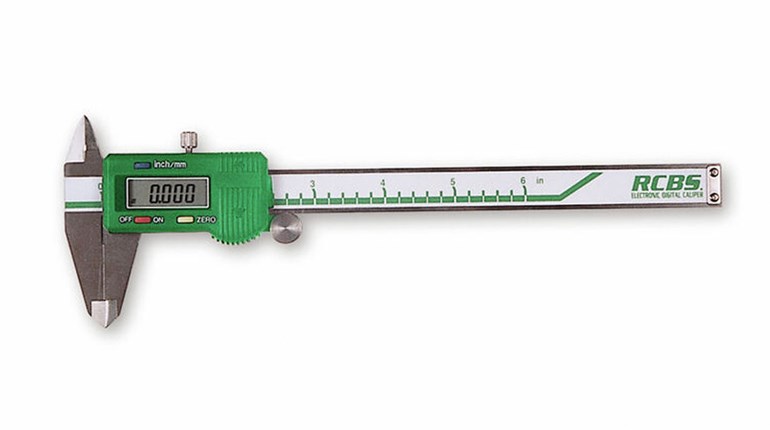
Shown above: The Walther PPS M2 9 mm pistol is paired with a Kramer Leatherworks holster and a CrossBreed Gideon magazine carrier.
This review originally ran in our October, 2016 issue.
Walther has long been known for its high-quality and innovative designs. Carl Walther created the first usable German semi-automatic pistol, the Model 1, in 1908. Just prior to World War II, Fritz Walther developed the first double-action/single-action trigger system in the Model PP. More recently, the company introduced the highly acclaimed model P99, which set new standards for modern, striker-fired pistols. And, of course, Walther is well known for its affiliation with the fictional British spy, James Bond, who carried a Walther PPK throughout most of the first 50 years of the franchise.
The original version of the Walther PPS (“Police Pistol Slim”), introduced in 2007, was considered by many to be a modern striker-fired version of the PPK concealed-carry classic. While the PPK was a groundbreaking compact pistol in its time, current technology makes the heavy, all-metal-frame, double-action/single-action PPK seem hopelessly dated, so the PPS’ polymer frame and striker-fired operation served as welcome advancements in Walther’s line. In response to the popularity of the PPS in both the law enforcement and concealed-carry markets, Walther refined the design with the introduction of the PPS M2.
The Walther PPS M2: Entirely Improved
The PPS M2 retains the defining characteristics of the original PPS design. The PPS is a compact, single-stack, striker-fired semi-auto that is remarkably slim, making it easy to conceal and carry. The handgun was engineered specifically to cater to the burgeoning self-defense market, as well as undercover law enforcement.

PPS pistols have several features that are not found in Walther’s other striker-fired pistols, like a cocking indicator on the rear of the slide and a chamber viewport. The user can easily determine the status of the pistol at a glance, without resorting to performing a press-check or other manipulation.
Like the original, the Walther PPS M2 is supplied with both a six- and seven-round magazines, and an eight-round version is available as an aftermarket purchase. All magazines integrate nicely with the grip of the polymer frame, providing an extended grip with the larger magazines, but maintaining aesthetically pleasing lines. The feel of the pistol changes dramatically with the different grip lengths—allowing most any shooter to achieve a comfortable grip.
New M2 upgrades to the original PPS design are striking, ensuring no one will confuse it with the original design. The slide and frame have been completely re-engineered into a more ergonomic form. While the original design was often described as “square” or “boxy,” the M2 has fluid lines and softer angles. Obviously, a concealed-carry pistol does not have to be attractive, but the curved lines of the Walther PPS M2 are pleasing to the eye and, more importantly, the hand. The finger grooves feel more natural, and the grip surfaces have a lower-profile, gritty texture, as opposed to the classic’s large dimples, which could be uncomfortable.

Perhaps my favorite change to the Walther PPS M2 is the re-design of the magazine release. The original PPS had an unusual paddle-style release lever integral to the trigger guard. Walther used this paddle-style release on many of its pistols during the period when the PPS was designed. While there may be some advantages to this configuration, I have spent decades using the thumb of my shooting hand to press the magazine-release button. I found it difficult to retrain myself to the paddle release, and feared it would only introduce potential confusion with other handguns.
To me, any advantages of the paddle-style release were outweighed by my reluctance to develop new habits specific to a particular pistol. I am glad Walther listened to its American customers and brought back the traditional button-style magazine release. Unfortunately, the new release is not ambidextrous, but I can live with the compromise. Left-handed shooters, however, may feel differently—the button is not reversible. The button-style release is well recessed into the grip, and unlikely to be actuated accidentally.

I was also pleased to see Walther did away with the unusual “QuickSafe” striker-disconnect feature of the original PPS. This design had an interchangeable backstrap that also functioned as a safety—decocking and blocking the striker when the backstrap was removed. Although this was envisioned as a safety device to ensure the striker was decocked when the gun was disassembled, it seemed to introduce a new potential point of failure for the gun.
Were the backstrap damaged in a fight, the Walther PPS M2 would be rendered inoperable. While that might be unlikely, the benefit of such an unusual safety never seemed to outweigh even a slight risk of total failure to me. I’m glad the “QuickSafe” feature is gone, but so is the interchangeable backstrap. Fortunately, the standard backstrap has a generous palm swell, and seems to fit most shooters reasonably well.

Walther has also redesigned the trigger system on the M2. The trigger itself has been reshaped and made wider. It appears the transfer-bar design is different, as well. While the trigger-pull weight remains the same, the feel is different from the original PPS. The M2 does not have the excellent trigger found in some of Walther’s other striker-fired guns, like the PPQ, but its trigger is certainly not bad. After a short take-up, the trigger pull is firm, without grittiness or stacking. Break is predictable and reset is quick.
Removal of the “QuickSafe” system also simplifies the takedown process. After ensuring the Walther PPS M2 is unloaded and the striker decocked, you simply retract the slide slightly and hold down the takedown catch on each side of the frame (similar to that found on Glock pistols). The slide is easily removed, and the barrel and the captured-spring guide-rod assembly follow.

Shooting and Carrying the Walther PPS M2
The M2 performed without incident at the range. It digested several hundred rounds of varying types of ammunition without any failures. Accuracy was solid for a compact gun with a 3-inch barrel, averaging groups of less than 2 inches at 10 yards. All of the premium defensive ammo I tested clocked in over 1,000 fps, except for the heavy 147-grain Winchester PDX-1 Defender. I would opt for a lighter bullet in this small pistol.
The improved frame and grip ergonomics of the Walther PPS M2 make it easy to control, even with hot ammunition. Shooting 9 mm rounds in a handgun this size is never going to be pleasant, but the recoil is moderate. I find the M2 points well, and the metal three-dot sights are easy to see. When combined with the redesigned trigger, most shooters will be able to get solid performance out of this gun.

I was able to test both the six- and seven-round magazines. In my large hands, the seven-round version will barely accommodate all four fingers—but the six-round version is still shootable with a pinky tucked underneath the magazine base plate. My only complaint with the Walther PPS M2 design is that rapid magazine changes can be tricky. You have to open up your grip on the pistol a bit in order to ensure the empty magazine falls free, and to insert a new magazine. You also have to be careful to insert the magazine at the proper orientation—the oddly shaped grip modules attached to the bottom of each magazine make it harder to tell the front edge from the back edge at a glance. Nevertheless, alternative magazine sizes are a great feature of this gun.

The M2 is well designed for concealed carry. It is large enough to shoot accurately, but small and thin enough to be easily concealed. The M2 is appropriate for either inside- or outside-the-waistband carry, or even deeper concealment holsters. Pocket carry, however, is not likely to work for anyone who doesn’t have massive pockets.
The Bottom Line
The Walther PPS M2 is a definite upgrade to the popular PPS platform. The design changes seem to reflect the demands of the American market, and are welcome. Although the PPS Classic is still available, I recommend the older model only if you strongly prefer the paddle-style magazine release or the interchangeable backstrap. It will be interesting to see how long Walther continues to offer the classic PPS, and how well it sells in comparison with the M2.
The Walther PPS M2 has a suggested retail price of $469 in its standard configuration, with two magazines. Walther also offers a law enforcement package, with three magazines and phosphorous night sights for $499. Unfortunately, there is not yet an option for tritium, self-illuminating night sights. Regardless of which model you purchase, you get a high-quality, German-engineered pistol with a lifetime warranty to the original owner. Walther has been building firearms for more than 100 years, and proudly stands behind its products with exceptional customer support.

The original PPS was groundbreaking in its size and features. Walther beat many of its competitors in the race to produce a compact, single-stack 9 mm pistol for the concealed-carry market, and the original PPS was very popular, with good reason. However, Walther clearly listened to its customers and made the PPS platform even better. The updated Walther PPS M2 is a worthy concealed-carry pistol in a market filled with competitive products. A modern successor to the venerable PPK, this is the Walther pistol James Bond wishes was issued by Q.






































